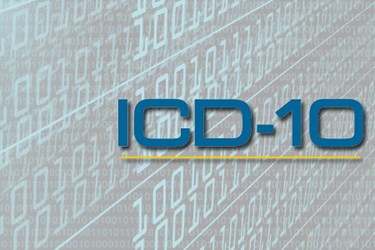ICD-10 Transition Puts Accuracy Of Patient Safety Indicators At Risk

By Christine Kern, contributing writer

A new multi-institutional study raises red flags about the effect of the transition to ICD-10 on patient safety indicators.
A multi-institution study published in the Journal of the American Medical Informatics Association has raised red flags regarding the transition from ICD-9 to ICD-10 Patient Safety Indicators.
"Ethical organizations addressing ‘data-, process-, and system-focused’ improvements could be penalized using the new ICD-10-CM Agency for Healthcare Research and Quality PSIs because of apparent increases in PSIs bearing the same PSI identifier and label, yet calculated differently,” the authors wrote in introducing their study.
According to the study, “The U.S. transition to ICD-10-CM in 2015 could result in erroneous comparisons of PSIs.” Using the General Equivalent Mappings (GEMs), the study compared the accuracy of ICD-9-CM coded PSIs against recommended ICD-10-CM codes from the Centers for Medicaid/Medicare Services and further predicted their impact in a cohort of 38,644 patients, comparing the predicted results to the published PSI related ICD-10-CM diagnosis codes.
"We provide the first report of substantial hospital safety reporting errors with five direct comparisons from the 23 types of PSIs (transfusion and anesthesia related PSIs)," the authors wrote. "One PSI was excluded from the comparison between code sets due to reorganization, while 15 additional PSIs were inaccurate to a lesser degree due to the complexity of the coding translation. The ICD-10-CM translations proposed by CMS pose impending risks for (1) comparing safety incidents, (2) inflating the number of PSIs, and (3) increasing the variability of calculations attributable to the abundance of coding system translations."
The researchers concluded that adequate translation of the PSIs should include unambiguous strategies for transition of all ICD-9-CM codes and their hierarchical parents or the redaction or reconstruction of related but new PSIs.
The authors concluded, “Improved coding guidelines for reporting PSI using ICD-10-CM codes are required to help hospitals and healthcare systems use ICD-10-CM more efficiently for improved patient care and prevention of patient harm. The prior published work with ICD-10-CA (Canadian modification) is helpful but the complexity of ICD-10-CM is many-fold greater in magnitude of codes. The widely reported improvement in quality in patient care through ICD-10-CM/Procedure Coding System (PCS) led to this comparison of PSIs before and after the transition.”
"The burden to the healthcare system is the neglect to address transition complexity," they wrote. "The transition could incent unethical ‘numbers-focused’ translations to improve adverse events statistics, while observed events may be unchanged or worsened. PSI results published on public reporting sites, such as Hospital Compare, could be non-representative of a safe hospital environment, which is a burden to patients. Publicly listing the new and removed PSIs early will help to inform the public about the changes and use of national hospital comparison data for patient safety."
